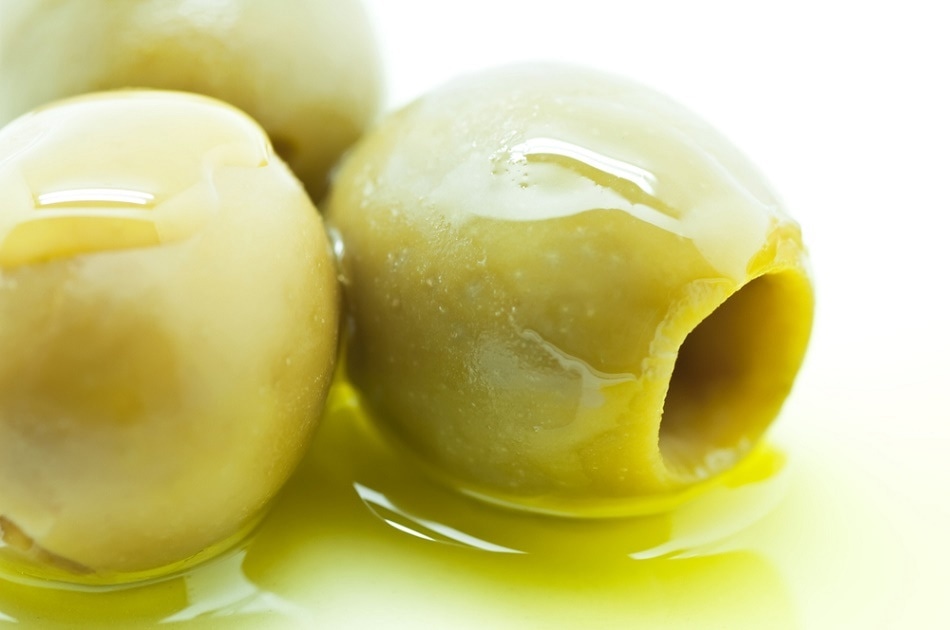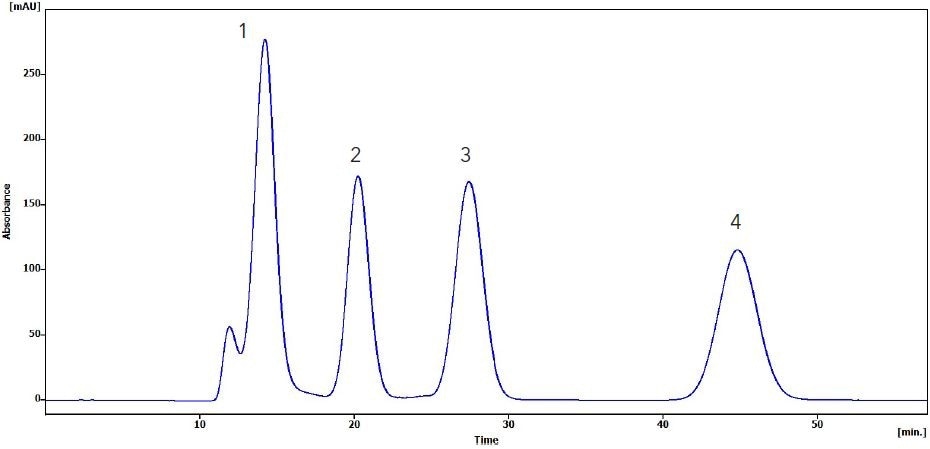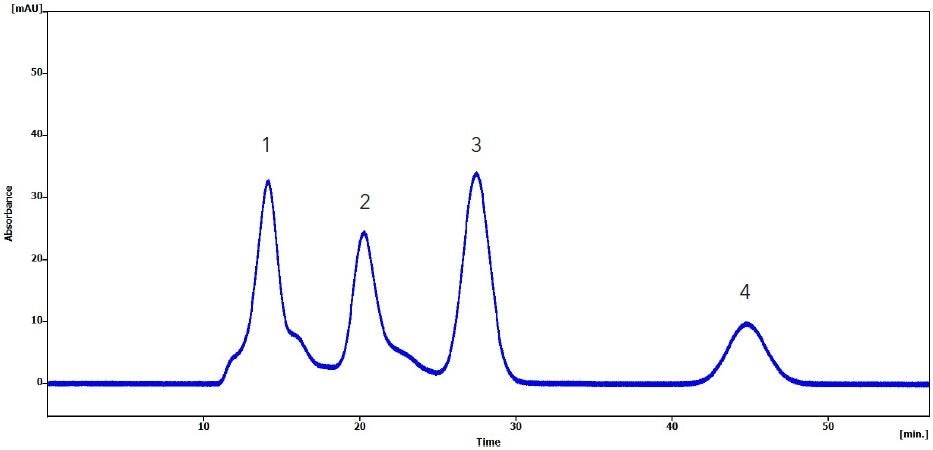Gel Permeation Chromatography (GPC) is widely used as an effective post-extraction clean-up process which facilitates the removal of high molecular weight interferences such as proteins, lipids, and polymers from sample extracts.

Shutterstock | Chanclos
The effectiveness of BioBeads SX-3 with an organic solvent in separating multi-pesticide residues has been documented at length [1-3]. The GPC method is suitable for both non-polar and polar analytes, so it can be used to efficiently clean up extracts which include a wide range of compounds. To illustrate the flexibility of the sample cleaning technique, the olive oil samples analyzed were spiked with a variety of compounds.
This article describes a sample cleaning method for assessing pesticide residues in olive oil in preparation for an HPLC analysis.
Size exclusion/gel permeation chromatography (GPC) was used to separate the pesticides from the oil matrix in accordance with the US EPA SW-846 method 3640A. In this study, BioBeads SX-3 was used as the GPC material and cyclohexane/ethyl acetate (1:1, v/v) served as the GPC solvent system. For automated sample cleaning, the optimized GPC purification technique was conducted using the KNAUER AZURA GPC Cleanup System.
Results
The chromatogram of the GPC calibration standard, eluted with cyclohexane/ethyl acetate (1:1, v/v), can be seen in Figure 1. The three detected pesticides were baseline separated and were clearly identified. Figure 2 illustrates the elution profile of one olive oil sample which included a variety of pesticides.
Here it is illustrated that all pesticides were detected using the US EPA technique 3640A. In contrast to the measurement of the standard solution, the spiked sample displayed fewer matrix effects. This indicates that all interfering high molecular elements were eliminated during the clean-up process. The recovery was higher than 70% for all these compound classes.

Figure 1. Chromatogram of US EPA method 3640A calibration standard containing: 1. Corn oil matrix, 2. Bis-(2-ethylhexyl)phthalate, 3. Methoxychlor, 4. Perylene

Figure 2. Chromatogram of olive oil sample, spiked with pesticides: 1. Olive oil matrix, 2. Bis-(2-ethylhexyl) phthalate, 3. Methoxychlor, 4. Perylene
Materials and Method
The KNAUER AZURA GPC Cleanup System was used in this research. This system, which automates the GPC cleanup process, consists of two AZURA ASM 2.1 L Assistant modules with different valves, a UV detector, and a pump.
Using the AZURA UVD 2.1 S UV detector, the compounds were detected at 254 nm wavelength, with 10 Hz data rate. The two 16-port multi-position valves used in this case enabled the loading of up to 15 oil samples, (5 mL or 1 mL samples loops). Furthermore, using a third 16-port multi-position valve, the pesticide fraction was gathered in a round-bottomed flask between the elution of corn oil.
The glass column with BioBeads SX-3 was flushed with cyclohexane/ethyl acetate (1:1, v/v) for a prolonged period at a flow rate of 5 mL/minute. In order to establish the elution profile of the GPC column, a calibration solution was prepared in cyclohexane/ethyl acetate. This solution included the following analytes: corn oil (25 g/L), methoxychlor (0.2 g/L), bis(2-ethylhexyl)phthalate (1 g/L), and perylene (0.02 g/L). The calibration solution was injected after column pressure and solvent flow were determined. The eluates were gathered according to the UV traces of the four eluates.
For additional analysis purposes using DC, GC, or HPLC methods, (not explained here), the different oil sample fractions gathered were carefully evaporated under a nitrogen stream, dispensed in 1 mL of an appropriate solvent, and filtered using a 0.45 µm syringe filter.
Conclusion
GPC sample preparation is a practical tool in cases where small quantities of pesticides have to be separated from high molecular weight matrices, such as olive oil. The KNAUER AZURA GPC Cleanup System is especially suited to sample preparation in pesticide analysis, but can also be easily adapted to other laboratory processes to perform a wide range of GPC sample preparation functions. The arrangement of the 15 sample loops and one wash loop prevents cross-contamination and enables a strong sample preparation process.
References
[1] Chamberain, S.J. Determination of multi-residues in cereal products and animal feed using gel-permeation chromatography. Analyst (1990), 115:1161-1165
[2] Di Muccio, A.; Ausili, a.; Versori, L; Camoni, I; Dommarco, t; Ganibetti, L; santillo, A and Versori, F. Single-step multi-residue clean-up for organophosphate pesticide residue determination in vegetable oil extracts by gas chromatography. Analyst (1990), 115: 1167-1169
[3] Guardia-Rubio, M; Fernandez-De Cordova, M.L.; Ayory-Canada, M.J. and Ruiz-Medina, A. Simplified pesticide multi-residue analysis in virgin olive oil by gas chromatography with thermoionic specific, electron-capture and mass spectrometric detection. J. of Chrom. A (2006) Volume 1108, 231-239
Download the White Paper for More Information

This information has been sourced, reviewed and adapted from materials provided by KNAUER Wissenschaftliche Geräte GmbH.
For more information on this source, please visit KNAUER Wissenschaftliche Geräte GmbH.